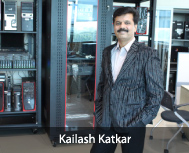Is IT Security still a Priority in these Uncertain Times?
 India is treading a fine line between the cross-sector economic slowdown and an unstable political scenario. Despite the tightened monetary policies to counteract the global factors that are contributing to the overall slowdown, domestic factors are equal contributors. More consumption paired with supply-side constraints has resulted in higher inflation.
India is treading a fine line between the cross-sector economic slowdown and an unstable political scenario. Despite the tightened monetary policies to counteract the global factors that are contributing to the overall slowdown, domestic factors are equal contributors. More consumption paired with supply-side constraints has resulted in higher inflation.
Political instability is again a serious malaise that handicaps economic performance. Investors and business decision makers alike hate political instability. In a capitalistic friendly and policy driven economy like India, such a scenario directly translates to reduced chances of normal policy implementation and actual reforms.
Combine both the factors and the bearish tendency to stick to the “risk-off” attitude gets a boost. And from the point of view of chief-level executives like CIOs, it’s often putting the crucial issue of securing the confidentiality and integrity of data associated with business networks on the back burner. It’s a tough choice between cost and benefit. Given the complexity of factors involved (economic, organizational, business and technology) in such decision-making it’s no surprise that there is always some amount of trade-off.
It’s hard to ignore the increasing number and sophistication of cyber attacks on businesses small and big especially under volatile economic-politico situations. Research shows that these attacks are expected to get significantly worse over the coming years. This clearly reinstates the fact that security is no longer restricted to a functional IT area, it is of strategic importance. Here understanding the connotation of security is important. Security within attack sophistications, rise of BYOD, and IT consumerism are things that chief-level officers have to take into consideration while trying to gauge how secure their organizations are.
Prioritizing security becomes important for the following reasons:
• Cybercrime business models are taking up new financial malware variants and cybercriminals are discovering new ways to monetize non-financial-data. Not only is victim’s information being sold underground, but access to victims’ computers is also being offered for sale. The rise of hacktivism where the operations fall in the middle of profit-motivated and non-profit motivated crime also puts organization data and its reputation at risk.
The motivation for these attacks can range from anything between ego, populist agenda, self-declared moral code, and front for other organizations. Similarly the methods of deployment can range from bribery, recruitment of insiders, malware and hacking tools that target a specific systems or set of data to denial-of-service tools.
• Companies large and small all have to deal with expansion and reduction in their employee workforce as the business and economy changes. In dull economic phases, company layoffs equates to a lot of bitter and jobless skilled people who have time in hand. This could be a simple motive for committing fraud for monetary benefits or to malign the company.
• Threats can be both internal and external. Insider attacks are more pronounced and difficult to cope with as the intruder is someone who is already entrusted with authorized access to a corporate system or network. With businesses embracing BYOD (Bring Your Own Device) the attacks vectors grow exponentially. The introduction of enterprise social media and mobility is also opening the door for potential data leaks.
• Adding to the BYOD IT consumerism are the new ways of delivering malware devised by cybercriminals like social engineering attacks such as fake antivirus and ransomware. Our R&D reported a whopping surge of 170 percent in malware modifications in 2012 alone.
• Cybercriminals are focusing on higher-value endeavors, including increased scams and malicious attacks, spear phishing attacks, and targeted attacks. Targeted attacks are becoming more pronounced as cybercriminals attack only a few or one organization, seeking crucial financial data or Intellectual property. Such attacks are usually well-investigated, researched and launched via emails.
For example, a chief level executive might receive an infected spreadsheet as an attachment promising sales data. If it is opened without being flagged then the malware gets installed and may steal credentials. This might be used later to login for a future attacks. At times such attacks do not use advanced techniques and could slip through undetected.
The costs to businesses in such attack scenarios are huge. Such costs often include personal information, theft protection programs, costs of “welcome back” programs, customer support costs, network security enhancement costs, legal and expert costs, and the impact on profits due to possible future revenue decreases.
In high-risk scenarios where there is political and economic instability, while the financial impact of these attacks translates to considerable monetary loss and stolen credentials, organizations also have to bear the cost of remediating infected hosts and the negative impact on their brand reputation. Hence the priority on IT security should never be compromised under such circumstances.
Quick Heal Technologies is a provider of internet security tools and antivirus technology in India. Founded in 1993 and headquartered in Pune, the company has received a total funding of $13 million from Sequoia Capital.